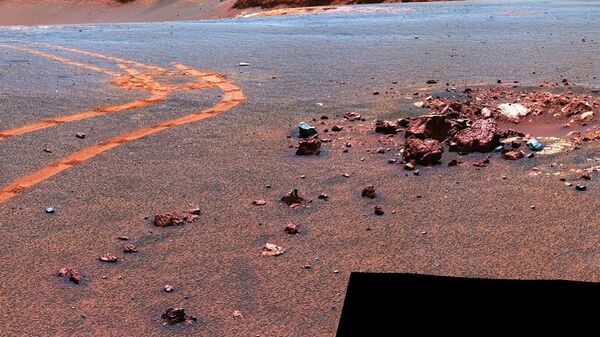An interdisciplinary team from Aarhus University recently conducted a study to probe the possible mechanism for the removal of methane from Mars' atmosphere, writes Universe Today.
Scientific debate regarding the possibility of life on Mars has grown increasingly heated over the past 15 years, once studies detected methane, an organic molecule that is associated with many forms of life here on Earth, in the Martian atmosphere.
Seeking to unravel the mystery of why subsequent attempts to observe Mars’ methane have produced varying results (sometimes methane was found that was several times its normal concentrations, on other occasions it was absent) the team from Aarhus University's Mars Simulation Lab proposed that "saltation" could be responsible.
In their study, published in the scientific journal Icarus, they argue that wind-driven erosion could be responsible for ionisation of methane into compounds like methyl, methylene, and carbine.
Using Mars-analog minerals the team discovered these solids could be oxidised and gases ionised during erosion processes. This proves ionised methane reacts and bonds with mineral surfaces.
Based on these results, the team concluded this mechanism could explain how methane is removed from the Martian atmosphere and deposited within its soil.
However, these studies also have fascinating implications on the possible existence of life on the Red Planet.
In addition to its effects on methane, the study also showed these minerals can lead to the formation of reactive oxygen chemicals, like peroxides, that are highly toxic to organisms, including bacteria.
Ultimately, the presence of these compounds means there is little chance that life could exist on or near the Martian surface.
The team intends to conduct follow-up studies to examine the bound methane, a more complex organic material that either originated on Mars or was deposited by meteorites.
Results of these observations may explain how organic materials are preserved in the Martian environment – a key question in the search for life on Mars.
The new research will also be of use to future Mars missions looking for signs of life, like the ESA's ExoMars 2020 rover and NASA's Mars 2020 rover, slated to arrive on the Red Planet in 2021.


